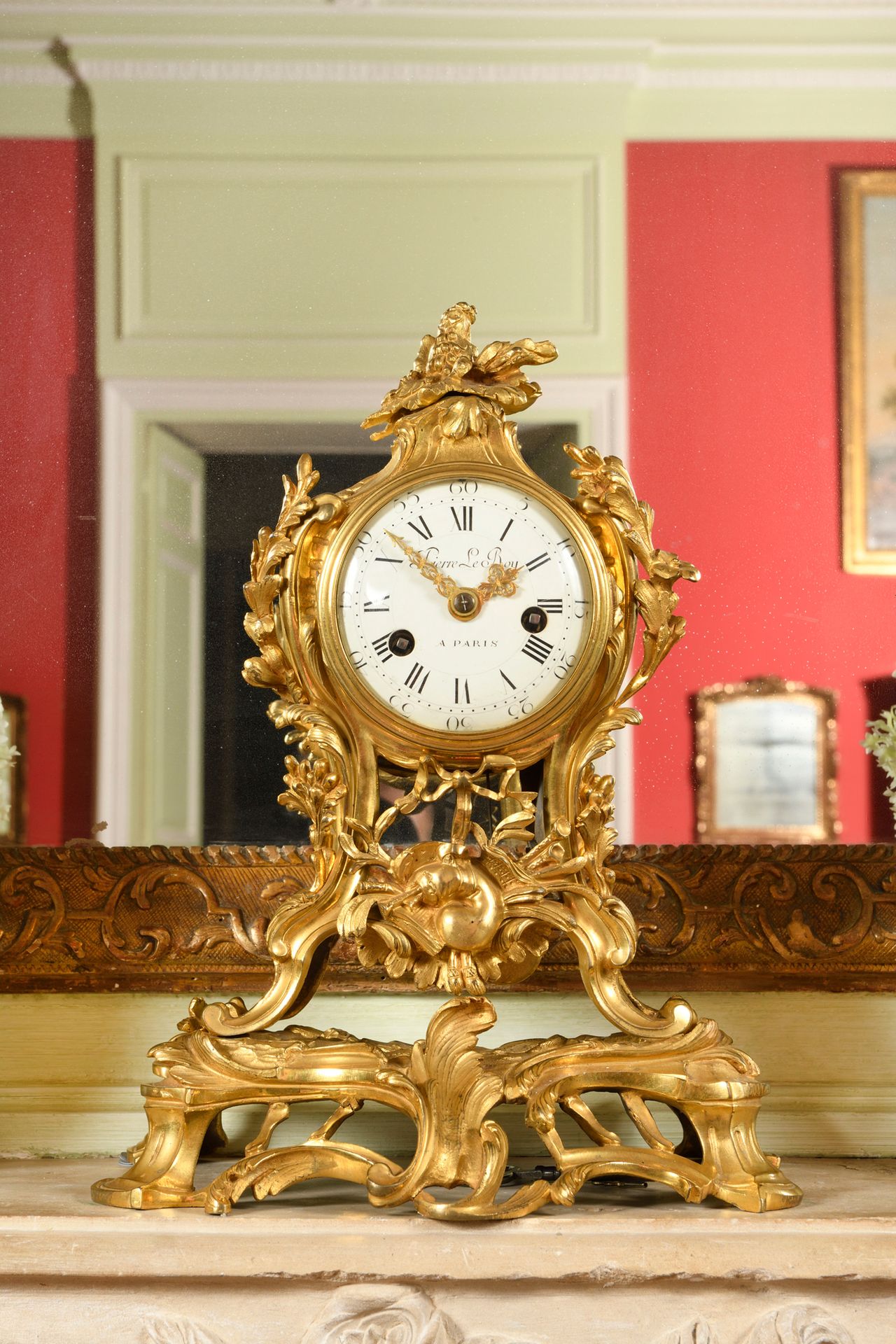Description
An ormolu, chased and openworked clock decorated with rocaille, flowers and clasps, it rests on a natural base and four small feet. The circular enamelled movement with Arabic and Roman numerals signed PIERRE LE ROY in Paris. Louis XV period H : 37 W : 28 D : 30 cm (maintenance restorations) Note : A French watchmaker of great renown, Pierre Le Roy (1717- 1785) marked the history of his art by his skill as a designer and his methodical mind. He was the eldest son of Julien Le Roy, scientist and appointed watchmaker to King Louis XV. As a worthy heir, and an extremely talented one at that, Pierre Le Roy followed in his father's footsteps and became a watchmaker in his turn. His exceptional inventive skills made him the father of chronometry. He was the creator of a chronometer of unprecedented regularity, equipped with a free escapement, an isochronous balance spring and a compensated balance. In 1748, he was also the first watchmaker to apply the detent escapement. His excellence in the particular field of marine watches earned him a double prize from the Académie des Sciences. On the other hand, complementary skills in astronomy and physics enabled him to design a single-wheel striking clock and a detent escapement. His brilliant mind led him to succeed his father as clockmaker to King Louis XV.
28
An ormolu, chased and openworked clock decorated with rocaille, flowers and clasps, it rests on a natural base and four small feet. The circular enamelled movement with Arabic and Roman numerals signed PIERRE LE ROY in Paris. Louis XV period H : 37 W : 28 D : 30 cm (maintenance restorations) Note : A French watchmaker of great renown, Pierre Le Roy (1717- 1785) marked the history of his art by his skill as a designer and his methodical mind. He was the eldest son of Julien Le Roy, scientist and appointed watchmaker to King Louis XV. As a worthy heir, and an extremely talented one at that, Pierre Le Roy followed in his father's footsteps and became a watchmaker in his turn. His exceptional inventive skills made him the father of chronometry. He was the creator of a chronometer of unprecedented regularity, equipped with a free escapement, an isochronous balance spring and a compensated balance. In 1748, he was also the first watchmaker to apply the detent escapement. His excellence in the particular field of marine watches earned him a double prize from the Académie des Sciences. On the other hand, complementary skills in astronomy and physics enabled him to design a single-wheel striking clock and a detent escapement. His brilliant mind led him to succeed his father as clockmaker to King Louis XV.
